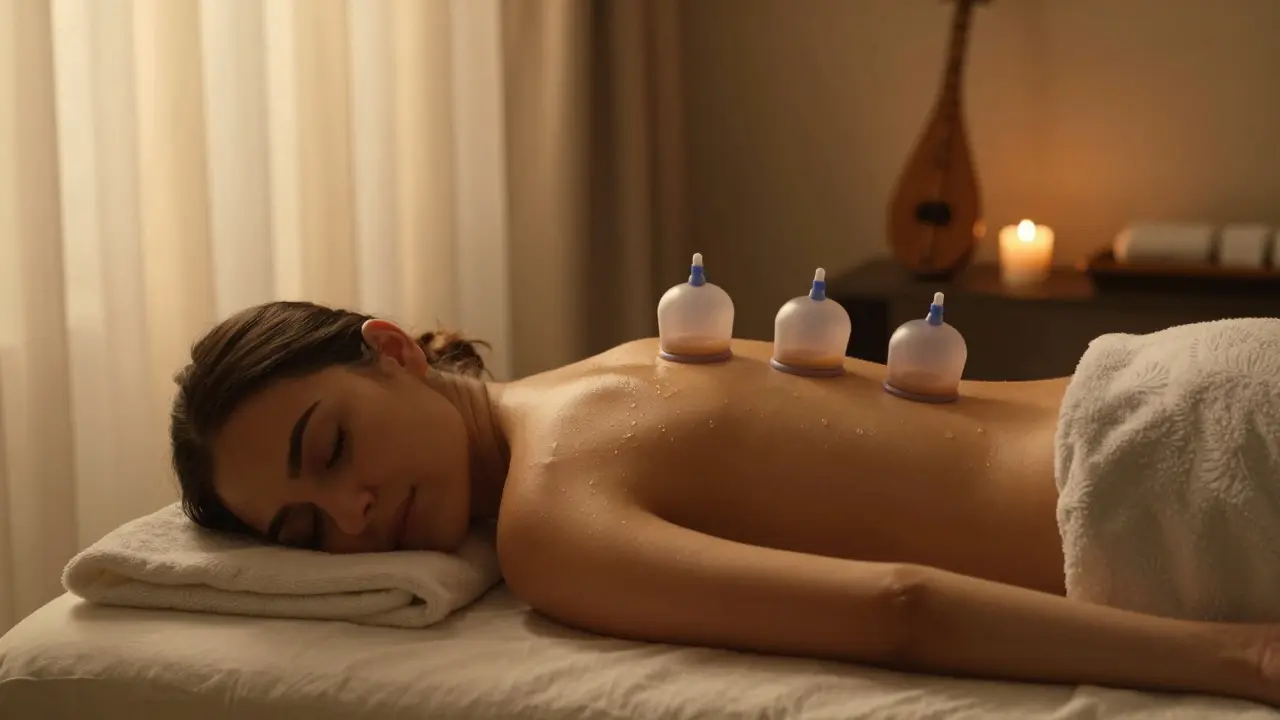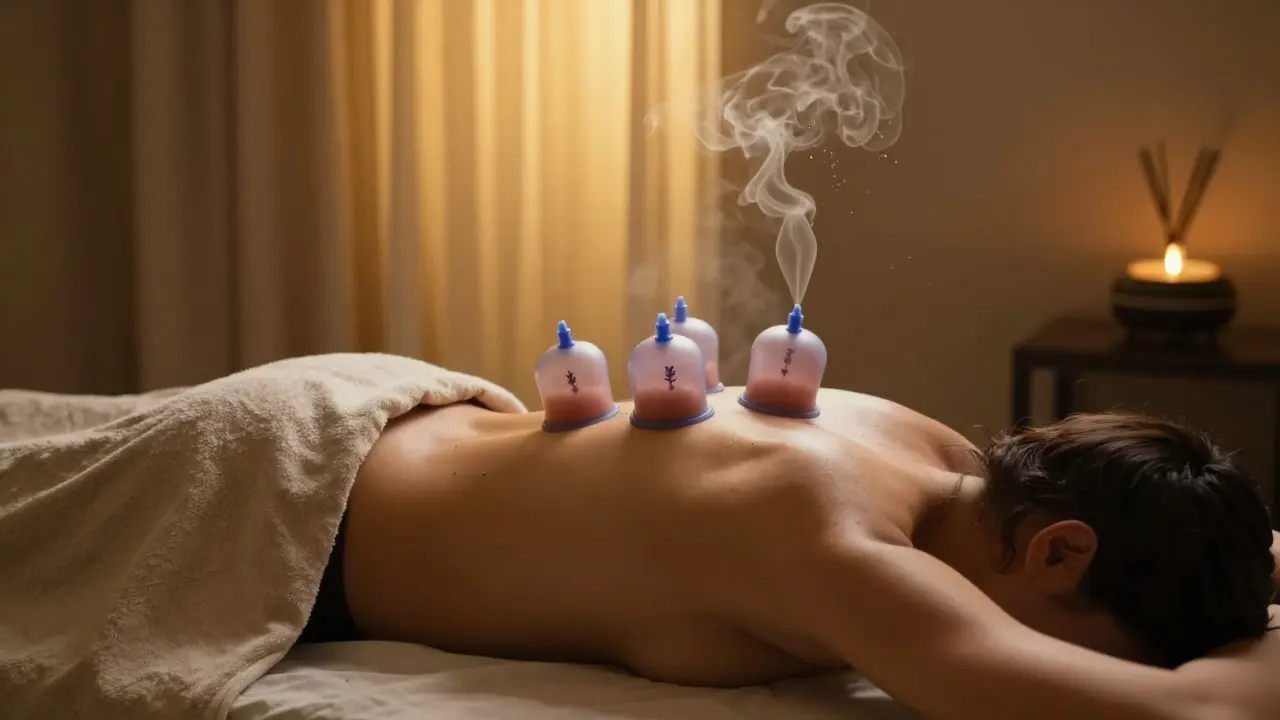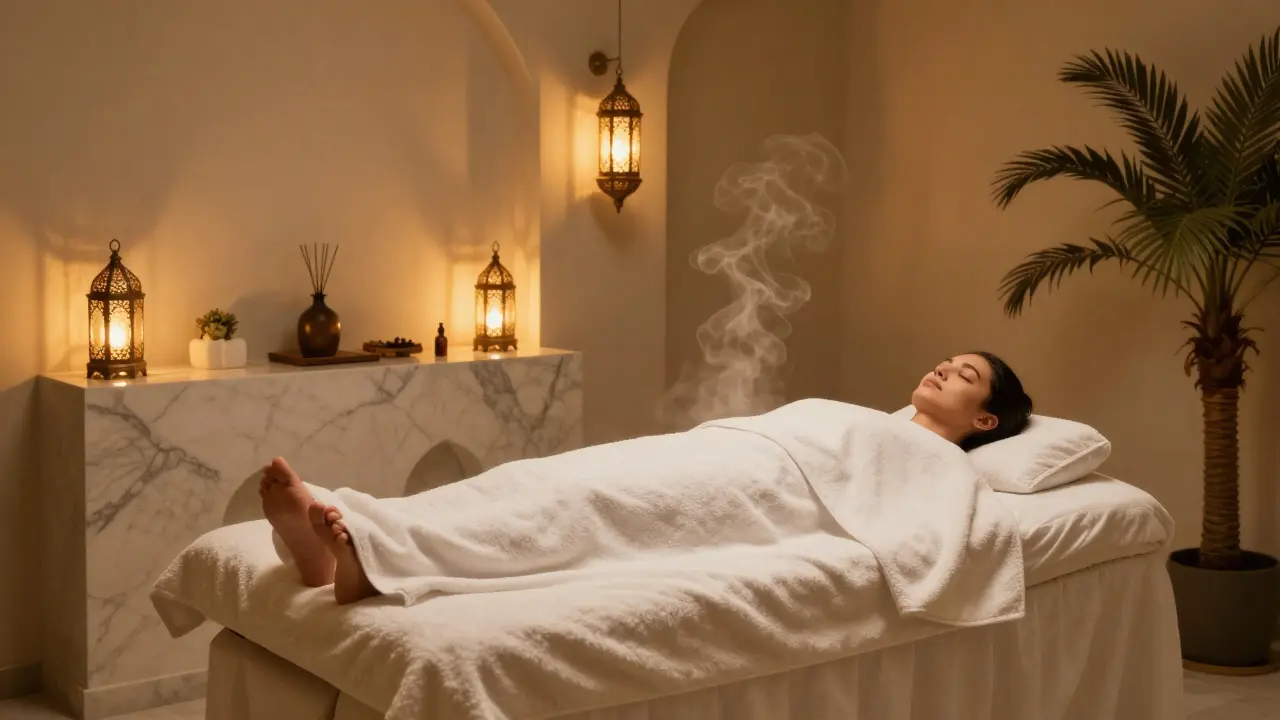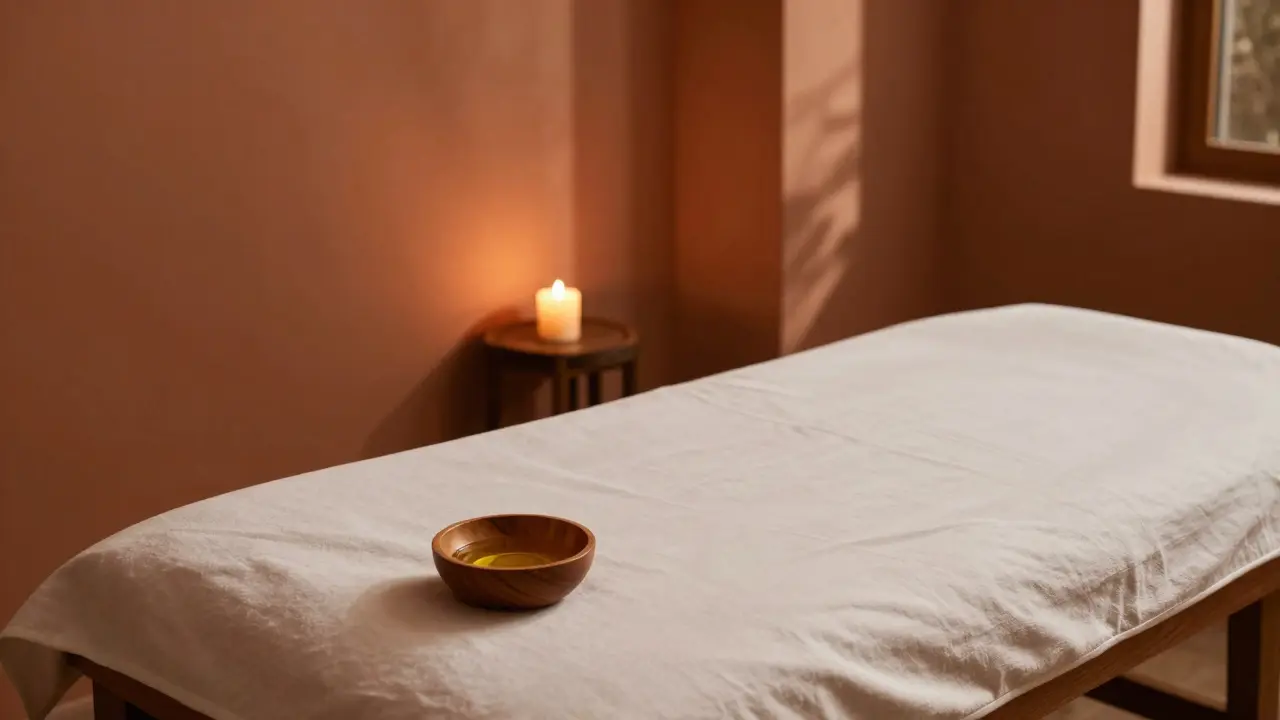Ever wondered if the suction cups you see on wellness Instagram feeds can actually firm saggy skin? cupping therapy is a centuries‑old practice that lifts the skin with gentle vacuum pressure, aiming to boost circulation and stimulate tissue repair. While many swear by its lifting effect, the science is a mix of anecdote and emerging research. This guide breaks down how cupping works, what it can (and cannot) do for loose skin, and how to use it safely.
Understanding the Basics of Cupping Therapy
Origins and History
Cupping dates back to ancient Egypt, China, and the Middle East. Travelers’ journals from the Silk Road describe travelers using heated bamboo cups to treat muscle pain. Over time, the method spread across Traditional Chinese Medicine, Islamic Hijama, and even European folk remedies. Modern spas have revived the technique, often branding it as a "beauty cupping" session.
Core Principles or Components
At its core, cupping creates a localized vacuum that pulls the skin and superficial fascia upward. The main components are:
- Suction cups - glass, silicone, bamboo, or plastic.
- Medium - dry cupping (air only) or wet cupping (small skin incisions plus suction).
- Duration - typically 5‑15 minutes per area.
How It Differs from Related Practices
People often compare cupping with other skin‑tightening approaches such as radio‑frequency (RF) devices, micro‑needling, or laser resurfacing. The table below highlights the main distinctions.
| Practice | Mechanism | Invasiveness | Typical Cost (USD) |
|---|---|---|---|
| Cupping (dry) | Vacuum‑induced lift & circulation | Non‑invasive | 30‑80 per session |
| Radio‑frequency | Heat‑induced collagen remodeling | Minimally invasive (surface heat) | 200‑500 per session |
| Micro‑needling | Controlled puncture to trigger repair | Minimally invasive (tiny needles) | 150‑400 per session |
| Laser resurfacing | Photothermal ablation of skin layers | Invasive (ablative) | 800‑2500 per session |
Who Can Benefit from Cupping?
Anyone looking for a gentle, non‑surgical lift may consider cupping. Ideal candidates include:
- Individuals with mild to moderate skin laxity on the neck, jawline, or décolletage.
- People who prefer holistic or low‑cost options before committing to high‑tech procedures.
- Clients already receiving therapeutic cupping for muscle tension who want added aesthetic benefit.
Benefits of Cupping for Loose Skin
Enhanced Blood Flow and Lymphatic Drainage
The suction draws blood to the surface, delivering oxygen and nutrients that support collagen synthesis. Simultaneously, lymphatic circulation improves, helping to clear metabolic waste that can contribute to dull‑looking skin.
Stimulation of Elastin Production
Elastin fibers give skin its springy quality. While the boost is modest compared to RF or laser, repeated cupping sessions can encourage a slight uptick in elastin, especially when combined with a protein‑rich diet.
Temporary Mechanical Tightening
Immediately after a cup is removed, the skin appears tighter because the tissues have been physically lifted. This effect can last a few hours to a day, offering a quick “photo‑ready” boost before events.
Holistic Wellness Crossover
Because cupping also eases muscle tension, clients often report smoother facial lines as jaw clenching relaxes. The table below summarizes key benefits.
| Benefit | Description | Impact on Loose Skin |
|---|---|---|
| Increased circulation | More oxygen‑rich blood reaches skin cells | Supports collagen rebuilding |
| Lymphatic drainage | Reduces puffiness and toxin buildup | Improves skin tone |
| Mechanical lift | Physical pulling of tissue | Temporary tightening effect |
| Muscle relaxation | Less facial tension | Softer appearance of lines |
What to Expect When Trying Cupping for Skin Tightening
Setting or Context
Most spas reserve a quiet, dimly lit room. A therapist will cleanse the area, often applying a light oil to help the cups glide. The environment feels similar to a facial, but you’ll notice the gentle pulling sensation.
Key Processes or Steps
- Therapist selects cup size based on treatment area.
- For dry cupping, they create vacuum by pulling a plunger or using a pump.
- The cup is placed on the skin for 5‑10 minutes, sometimes moved in a sliding motion.
- After removal, a mild redness (similar to a solar kiss) fades within 24‑48 hours.
Customization Options
Practitioners can adjust suction strength, cup material, and duration. Some combine cupping with gentle facial massage or serums containing hyaluronic acid to amplify hydration.
Communication and Preparation
Tell your therapist about any skin conditions, recent cosmetic procedures, or bleeding disorders. A quick skin‑test patch can ensure you don’t bruise excessively.
How to Practice Cupping at Home (If You’re Curious)
Setting Up for Success
Create a clean space, gather a set of silicone cups (cheaply available online), and have a soothing facial oil ready. Warm the room to around 24 °C to keep muscles relaxed.
Choosing the Right Tools
Silicone cups are preferred for beginners-flexible, easy to clean, and less likely to cause bruising. Avoid glass cups unless you have professional training.
Step‑by‑Step Guide
- Wash your hands and the treatment area.
- Apply a thin layer of oil to reduce friction.
- Press the cup onto the skin, squeeze the silicone to create suction, then release.
- Leave the cup in place for 3‑5 minutes per spot. Move slowly if you’re doing a sliding technique.
- Remove the cup, massage the area gently, and moisturize.
Tips for First‑Timers
Start with low suction on a small area like the jawline. If you notice deep bruising, cut the time in half next session. Consistency beats intensity-2‑3 sessions per month usually yields noticeable firmness.
Safety and Ethical Considerations
Choosing Qualified Practitioners
Look for therapists certified by recognized bodies such as the International Association for Massage & Bodywork (IAM) or local Dubai wellness boards. Verify that they have specific training in facial cupping.
Safety Practices
| Practice | Purpose | Example |
|---|---|---|
| Skin test | Check bruising risk | Apply cup on forearm for 30 seconds |
| Sterile equipment | Prevent infection | Use disposable silicone cups or clean glass cups with alcohol |
| Medical clearance | Avoid complications | Consult doctor if you have clotting disorders |
| Gentle suction | Minimize tissue damage | Start at low pressure and increase slowly |
Setting Boundaries
Communicate discomfort immediately. A good therapist will release the cup the moment you say "stop" or feel sharp pain.
Contraindications or Risks
Avoid cupping if you have:
- Active skin infections or eczema flare‑ups.
- Recent facial surgery, laser treatment, or chemical peels (wait at least 2‑4 weeks).
- Bleeding disorders or are on anticoagulant medication.
- Pregnancy (especially over the abdomen or lower back).
Enhancing Your Cupping Experience
Adding Complementary Practices
Pair cupping with facial acupuncture, LED light therapy, or a collagen‑rich serum to boost results. A short mindfulness meditation before the session can also improve blood flow.
Solo vs. Partner Sessions
If you’re comfortable, you can do a gentle home routine alone. For deeper work on the neck or back, a partner can help place cups safely.
Using Props or Accessories
Some spas place warm towels under the cups to enhance relaxation. A handheld pump offers more precise suction control than the manual squeeze method.
Regular Engagement for Benefits
Like any skin‑care habit, consistency matters. A realistic schedule is once every 2‑3 weeks, paired with daily sunscreen and hydration, to maintain modest firmness.

Finding Resources or Experts for Cupping
Researching Qualified Professionals
Check online directories for Dubai wellness centers, read client reviews, and verify certifications. Many clinics post therapist bios outlining cupping training.
Online Guides and Communities
Reputable sites such as the American Massage Therapy Association (AMTA) offer free PDFs on safe cupping techniques. Forums like r/SkincareAddiction also discuss personal results-just filter out anecdotal hype.
Legal or Cultural Considerations
In the UAE, medical‑grade cupping falls under the Ministry of Health’s alternative medicine guidelines. Ensure the spa follows local licensing rules.
Resources for Continued Learning
Books like "The Art of Cupping" by Dr. Sami Al‑Hajri provide in‑depth anatomy diagrams. Video tutorials from accredited instructors can be useful for home practice.
FAQ: Common Questions About Cupping for Loose Skin
Does cupping actually tighten skin, or is it just a temporary effect?
Cupping provides a short‑term mechanical lift that can last several hours. Over repeated sessions, the increased blood flow and mild collagen stimulation may lead to modest, lasting firmness, but results are far less dramatic than laser or RF treatments.
How often should I schedule cupping sessions for skin benefits?
Most practitioners recommend every 2‑3 weeks for the first three months, then monthly maintenance. This cadence balances tissue recovery with the cumulative effect of improved circulation.
Can I combine cupping with other anti‑aging treatments?
Yes. Cupping pairs well with hyaluronic‑acid serums, gentle exfoliation, and LED light therapy. Avoid combining with aggressive chemical peels or microneedling on the same day to prevent over‑irritation.
Is cupping safe for all skin types?
People with sensitive or compromised skin should start with low suction and short duration. Those with darker skin tones may notice more visible bruising, which is harmless and fades. Always discuss skin concerns with a qualified therapist before starting.
Do I need to do anything after a cupping session?
Hydrate, apply a soothing moisturizer, and avoid direct sun exposure for 24 hours. If you notice prolonged redness or swelling, contact the therapist.
Conclusion: Why Cupping Is Worth a Try for Loose Skin
A Path to Gentle Firmness
Cupping isn’t a magic bullet, but it offers a low‑cost, low‑risk way to boost circulation, support collagen, and enjoy a temporary lift that many find confidence‑boosting before events.
Try It Mindfully
Start with a reputable Dubai spa or a beginner‑friendly home kit, respect the body’s signals, and pair the practice with good skin‑care basics. When in doubt, ask a certified practitioner.
Share Your Journey
Have you tried cupping for skin tightening? Drop a comment below with your experience, or follow our blog for more wellness tips tailored to Dubai’s vibrant spa scene.
Disclaimer: Some links may be affiliate links, but all recommendations are based on research and quality.









Selene Becmar
October 25, 2025 AT 16:20Ah, the ancient whisper of suction cups reverberates through the corridors of time, urging us to contemplate the fleeting nature of flesh. In the grand theater of self‑care, cupping emerges as both performer and philosopher, a modest instrument that dares to lift the very skin that bears our stories. Every gentle pull is a stanza, a silent ode to circulation, coaxing blood to dance upon the surface like a sunrise over a desert oasis. Yet, let us not be beguiled by the rouge hue that blossoms upon removal, for it is but a fleeting cameo, a transient veil of vanity. The true alchemy lies deeper, in the subtle coaxing of collagen and elastin, those silent architects of resilience. While modern clinics flaunt lasers and radio‑frequency, the humble cup reminds us that nature’s modest tools can still whisper promises of firmness. Scientific scrutiny, though still nascent, hints at modest increases in elastin synthesis when the practice is repeated with patience. Patience, dear seeker, is the cornerstone of any transformation; you cannot summon a marble statue with a single tap of a cup. Consistency-two to three sessions per month-allows the skin’s cellular chorus to harmonize, gradually tightening the slackened verses of laxity. Moreover, the ritual’s meditative cadence calms the mind, and a relaxed jawline often appears smoother, as tension unravels its knots. For those dwelling beneath the bright lights of Dubai’s spas, the experience can be both an aesthetic and a cultural communion, honoring traditions that span continents. Yet, heed the cautions: bruising, especially on darker tones, may linger like a faint memory, and those with coagulopathy should abstain. In practice, silicone cups offer a gentle entry, whereas glass demands reverence and expertise. Pairing the lift with nourishing serums-think hyaluronic acid or peptide blends-can amplify the fleeting firmness into a more enduring glow. Thus, cupping occupies a modest niche: a low‑cost, low‑risk adjunct that whispers of lift, not a thunderous proclamation of surgical transformation. Embrace it with curiosity, respect its limits, and you may find that the ancient art bestows a subtle, confidence‑boosting rise that resonates far beyond the mirror. 😊
Carli Lowry
October 25, 2025 AT 18:33Your poetic framing of cupping captures its mystique beautifully. While the physics of suction is straightforward, the cultural tapestry behind it adds layers of meaning. For readers in the U.S., the accessibility of silicone kits makes home experimentation realistic. However, I’d caution newcomers to start with brief, low‑suction trials to avoid lingering bruises. Ultimately, the blend of tradition and modern skincare can be a delightful journey.
Enuma Eris
October 25, 2025 AT 22:43Cupping feels like a gentle tug of ancient hands on modern skin. The red marks are like sunrise shadows that fade with time. Consistent sessions can coax a modest firmness that many describe as a quiet rebirth. Always test a small area first to respect your body’s response.
George Christopher Ray
October 26, 2025 AT 02:53The procedural guidelines outlined herein adhere to prevailing dermatological standards.
Rich Beatty
October 26, 2025 AT 06:03Great summary! Remember to hydrate well after each session, as water supports the skin’s repair processes. If you keep a steady schedule, you’ll likely notice a subtle lift over weeks. Keep up the disciplined approach!